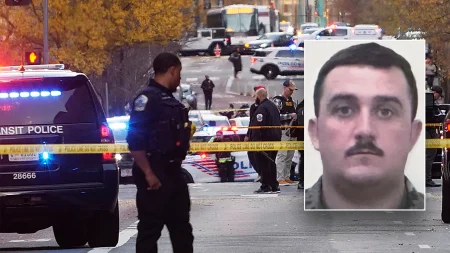Big cities, particularly in developed nations, have grappled with a confluence of challenges in recent years, ranging from escalating housing costs and persistent homelessness to rising crime rates and concerns about public safety. These issues have often dominated local political discourse and fueled anxieties among residents. However, despite the prevalent narrative linking urban woes to recent electoral shifts towards more conservative or right-leaning political platforms, a deeper examination reveals a more nuanced and complex landscape. The assertion that these urban problems single-handedly propelled voters towards the right in the November elections lacks substantial empirical support and overlooks other significant contributing factors, both local and national. Understanding the true motivations behind voter behavior requires a more comprehensive analysis that considers broader societal trends, economic anxieties, cultural divides, and the specific political context of each election.
One of the primary challenges confronting large urban centers is the affordability crisis in housing markets. Driven by a combination of factors, including limited housing supply, increased demand, speculative investment, and stagnant wages, housing costs have soared in many cities, making it increasingly difficult for residents, especially lower and middle-income earners, to secure stable and affordable housing. This has led to a rise in homelessness and housing insecurity, contributing to a sense of precarity and dissatisfaction among some urban dwellers. While these issues undoubtedly impact the quality of life in cities and may influence local elections, their direct correlation with a broader shift towards right-leaning politics on a national level remains tenuous. Economic anxieties are often intertwined with other concerns, and voters’ responses can be shaped by a range of factors, including their perception of how different political parties propose to address these issues.
Another frequently cited urban problem is the issue of crime and public safety. While crime rates have fluctuated over time and vary significantly across different cities, concerns about public safety often feature prominently in political campaigns and media coverage. These concerns can be amplified by sensationalized reporting and political rhetoric, leading to heightened anxieties among residents. Some argue that these anxieties contribute to a desire for tougher law-and-order policies and a shift towards more conservative political platforms. However, it is crucial to analyze crime data objectively and avoid generalizations. Moreover, attributing shifts in voter behavior solely to crime concerns overlooks the multifaceted nature of public safety issues and the complex interplay of social, economic, and political factors that influence voter decisions.
Beyond the specific challenges of housing and crime, big cities also face issues related to infrastructure, transportation, and public services. Aging infrastructure, congested transportation systems, and strained public resources can create frustrations for residents and contribute to a sense of decline in the quality of urban life. These issues can become politicized, with different political parties offering contrasting solutions and vying for voter support. However, it is important to distinguish between local elections, where these urban issues may have a more direct impact on voter choices, and national elections, where broader national concerns and political narratives often play a more dominant role.
Furthermore, the claim that urban problems drove a rightward shift in voter preferences overlooks the significant influence of national political trends, ideological divisions, and cultural anxieties. National political narratives, often amplified by partisan media, can shape public perceptions and influence voter behavior. These narratives can tap into broader societal anxieties, such as economic inequality, cultural change, and immigration, which may resonate with voters regardless of their urban or rural location. Moreover, the increasing polarization of the political landscape and the hardening of partisan identities can contribute to a more tribalistic approach to politics, where voters align themselves with their chosen party regardless of specific local issues.
Finally, understanding voter behavior requires considering the specific context of each election. Factors such as the candidates, the campaign messaging, and the prevailing political climate can all influence electoral outcomes. Attributing a shift in voter preferences solely to urban problems overlooks the complexity of electoral dynamics and the interplay of local and national factors. While urban issues undoubtedly play a role in shaping local politics and influencing voter choices at the city level, their impact on national electoral trends is often overstated and requires more nuanced analysis. A more comprehensive understanding of voter behavior necessitates considering the broader political context, the influence of national narratives, and the diverse motivations that drive individual voters to cast their ballots in a particular way. Simply attributing a rightward shift to urban problems provides an incomplete and potentially misleading picture of the complex factors that shape electoral outcomes.








